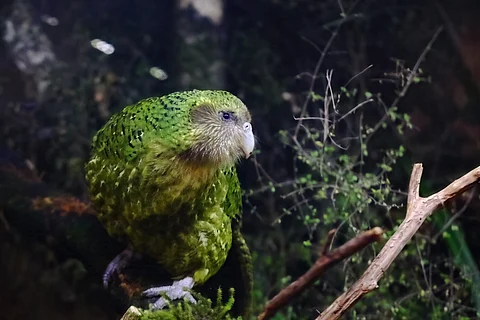

A major global study has revealed that targeted conservation efforts have helped hundreds of animal species avoid extinction—though far more are still in decline.
Researchers reviewed data for over 67,000 animal species and found that while the planet remains in the grip of a biodiversity crisis, species-specific conservation measures significantly reduced extinction risks and, in many cases, prevented extinctions altogether.
The study, published in PLOS Biology on March 18, 2025, highlighted several success stories. The Iberian lynx, once considered the most endangered cat in the world, has rebounded from just a few hundred individuals to several thousand. The kākāpō, a critically endangered nocturnal, flightless parrot from New Zealand, benefitted from a long-running recovery programme. The European bison, hunted to extinction in the wild in the early 20th century, now roams free in parts of eastern Europe thanks to decades of sustained reintroduction efforts.
Marine species also showed strong recoveries. Humpback and blue whale populations, once decimated by commercial whaling, bounced back following the international moratorium on whaling.
“We found that almost all the species that have moved from a more threatened category to a less threatened category have benefitted from some sort of conservation measures,” said lead author Ashley Simkins from University of Cambridge. “It’s a strong signal that conservation works.”
The research, conducted by scientists from the University of Cambridge, the IUCN, BirdLife International and the universities of Oxford and Durham, analysed data from the IUCN Red List. They aimed to understand which actions had been implemented, which types of species had improved and what had driven those improvements.
The team found that nearly all species that improved in conservation status had targeted interventions in place. Of the 969 species with globally increasing populations, 78.3 per cent had conservation actions implemented. Among the 288 species whose Red List category improved since 1980, 99.3 per cent benefitted from conservation efforts. Actions included habitat management, reintroductions, legal protections and breeding programmes.
Island ecosystems emerged as hotspots of recovery, with the highest numbers of improving species in locations such as New Zealand, Mauritius, the Seychelles, Chatham Island, Guadeloupe and Borneo. Other regions showing improvement included parts of the eastern United States, Costa Rica, eastern Australia, southern India and Brazil’s Atlantic Forest.
However, the study also painted a stark picture of ongoing biodiversity loss. For every species that improved, nearly six deteriorated. Since 1980, 1,220 species of amphibians, birds and mammals suffered net declines in Red List status, compared with just 201 that improved.
In total, 25 species deteriorated from ‘Least Concern’ to ‘Critically Endangered’, while none improved in the opposite direction.
Species threatened by habitat destruction, hunting and fishing and pollution were far more likely to be in decline. Climate change, disease and invasive species also contributed to deteriorating statuses. Paradoxically, some species threatened by climate change or invasive species showed population increases, highlighting the complex and sometimes contradictory effects of different threats and conservation responses.
Regions with the highest concentrations of declining species included the tropical Andes, Peninsula Malaysia, Sumatra, Borneo, southern Europe, central Asia and parts of south-eastern Australia.
The authors concluded that although targeted conservation has worked in many cases, far more ambitious and coordinated action is needed to reverse global biodiversity loss.
The study called for substantial scaling-up of conservation interventions—particularly landscape-scale efforts that benefit widely distributed species — in order to meet Goal A of the Kunming-Montreal Global Biodiversity Framework, which aims to restore species populations to resilient levels and reduce extinction risk.